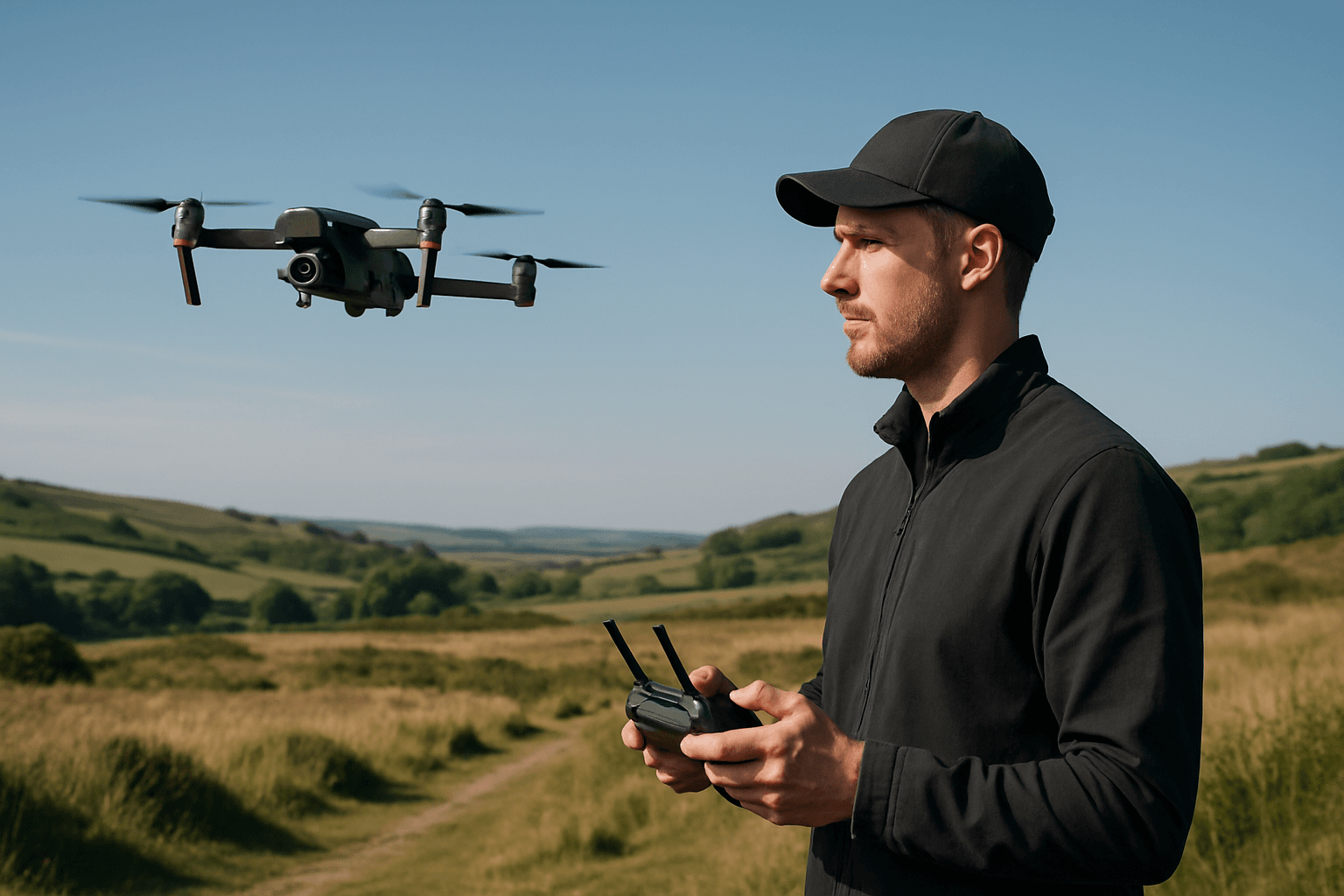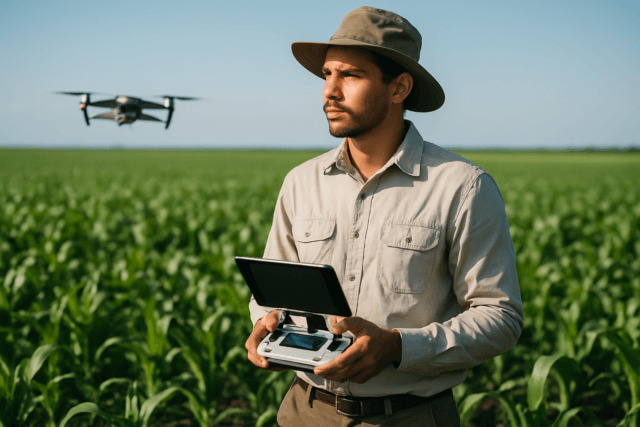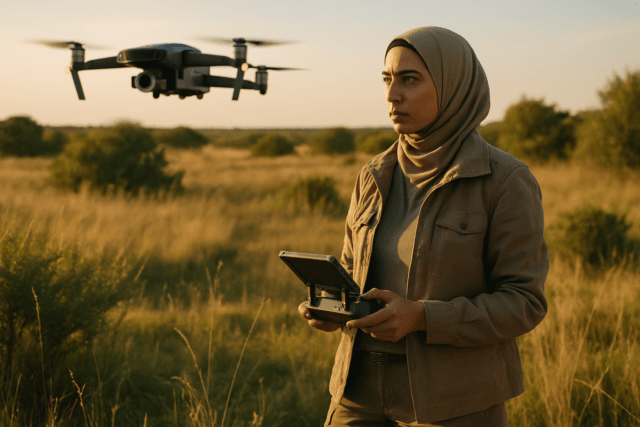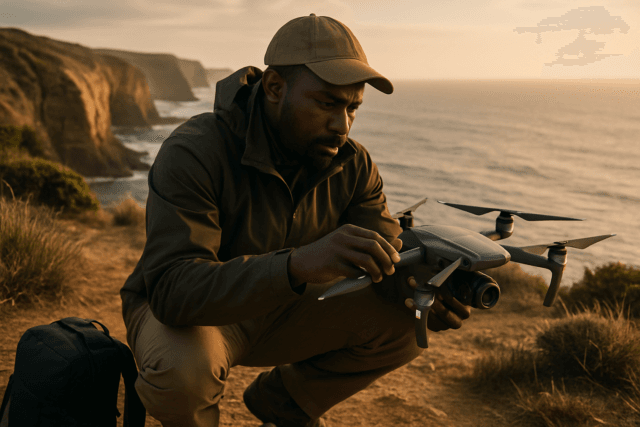Drones have revolutionized photography, offering breathtaking aerial perspectives previously unattainable. However, with this power comes significant responsibility. As a photographer in the UK, mastering drone safety is not just about protecting your equipment; it’s about adhering to the law, respecting privacy, and ensuring the safety of yourself and others. This comprehensive guide covers essential safety measures, legal requirements, and best practices for drone photography in the UK, ensuring you capture stunning images responsibly.
Is Drone Photography Safe? Top Safety Tips
1. Pre-Flight Planning: The Key to Safe Skies
Thorough pre-flight planning is paramount to ensuring drone safety. This involves several critical steps:
Weather Check: Good weather is vital for safe drone flight. Check weather forecasts the night before, just before you set out, and immediately before takeoff. Pay close attention to wind speed, visibility, and the possibility of precipitation. High winds can make it impossible for the drone to return, and icing, even if ground temperature is above 0C, can easily bring a drone down by building up on propellers.
Airspace Awareness: Before heading to any location, consult maps from the local aviation authorities. Check for proximity to airports, low-flying zones, military bases, stadiums, and prisons. Many countries have restrictions near these locations, which may require special permissions or be entirely prohibited. Tools like the Drone Assist App can provide valuable airspace information.
Location Scouting: Use tools like Google Earth and Street View to assess your chosen location. Identify potential obstacles such as trees, power lines, and buildings. Look for suitable takeoff and landing zones that are clear and away from people.
Check NOTAMs: Before each flight, check for temporary flight restrictions (TFRs) and “no drone zones” using official apps. Temporary Flight Restrictions (TFRs) may be put in place for VIP movements, space launches, or other special events.
Fly first, capture second: Prioritizing the shot you want over losing the drone or causing someone serious injury isn’t worth it.
2. Essential Equipment Checks: Ensuring Your Drone’s Airworthiness
Before each flight, perform a comprehensive inspection of your drone and its components:
Battery Inspection: Check the battery’s charge level and condition. Ensure it is fully charged and free from any physical damage, such as swelling or leaks. Make sure the battery is properly pushed into the drone and will not come loose in flight.
Propeller Check: Inspect each propeller for nicks, cracks, bends, or imbalances. Ensure they are correctly installed and securely fastened. Hand-spinning the propellers can help identify imbalances.
Motor Examination: Ensure the motors are securely attached and clear of debris or obstructions. Listen for any unusual noises during operation, as this could indicate an issue with the motor bearings.
Frame Inspection: Examine the drone’s body for cracks, stress marks, or any signs of damage.
Gimbal and Camera: Ensure the gimbal and camera mounts are stable and working correctly. Clean the camera lens with a soft cloth to remove any dust or smudges. Calibrate the camera following the instructions provided by the drone manufacturer.
Landing Gear: Confirm the landing gear is securely fastened and undamaged.
3. Safe Flying Practices: Mastering Drone Control
Once airborne, adhere to the following safe flying practices:
Maintain Visual Line of Sight (VLOS): Always keep your drone within your direct visual line of sight. It can be easy to get lost watching a scene unfold on your controller’s monitor and not notice your drone is heading dangerously close to a line of trees out of your sight. Position yourself in a location that maximizes your field of view before launching the UAV.
Fly Below 400 Feet: UK regulations restrict drone flights to a maximum altitude of 400 feet above the surface.
Avoid Flying Over People and Properties: Maintain a safe distance from people, buildings, vehicles, and vessels. The UK Drone and Model Aircraft Code specifies a minimum distance of 50 meters from people and properties and 150m from congested areas or large groups of people.
Yield Right of Way: Always yield the right of way to manned aircraft.
Monitor Battery Levels: Keep a close eye on your drone’s battery level and land well before it’s depleted. Be aware that flying with the wind outbound means your drone will have to work harder and drain more battery to return.
Be Prepared for Emergencies: Know how to activate the drone’s return-to-home function in case of signal loss or other emergencies.
4. Post-Flight Procedures: Securing Your Drone and Data
After landing, follow these procedures:
- Inspect the Drone: Check for any damage sustained during the flight.
- Secure Batteries: Let batteries cool down to ambient temperature after a flight before charging. Store batteries at a 40-60% charge in a cool, dry place for extended periods of non-use.
- Data Management: Safely store and back up your photos and videos. Delete any unnecessary footage, especially if it contains personal data.
Navigating UK Drone Laws: Staying Legal in the Skies
1. Registration and Licensing: Are You Compliant?
Operator ID: If you own a drone weighing over 250g or equipped with a camera, you must register with the Civil Aviation Authority (CAA) and obtain an Operator ID. Only people over the age of 18 can register for an Operator ID. This registration comes at a cost of £9 and is renewed every year. The Operator ID must be clearly displayed on every drone you own or manage. Failure to comply with this rule can result in a £1000 fine.
Flyer ID: Anyone piloting a drone weighing over 250g must pass a basic online test with the CAA to obtain a Flyer ID. They must carry their Flyer ID details at all times while flying.
Commercial Operations: If you intend to use your drone for commercial purposes, such as selling aerial photography or offering drone services, you need approval from the CAA in the form of a Permission for Commercial Operations (PfCO). This involves studying and passing an exam on drone laws in the UK, health and safety considerations, and how to ensure a drone is airworthy.
2. Understanding Privacy Laws: Respecting Individuals and Property
- GDPR Compliance: Be aware of the General Data Protection Regulation (GDPR) when capturing images or videos that may contain identifiable individuals. You’ll need a legal basis for collection, like consent or legitimate interest. Obtain consent from individuals before photographing them or their property whenever possible.
- Transparency: Be transparent about your drone operations and inform people if you plan to record or take images where they are present.
- Data Minimization: Only capture what’s necessary and avoid collecting excessive personal data.
- Individual Rights: If a drone captures a photo of someone or their property, they have the right to know about it and request deletion of the data.
- Restrictions on photography: It’s against the law to take photographs or record video or sound for criminal or terrorist purposes.
3. No-Fly Zones: Where Are You Prohibited from Flying?
Be aware of restricted airspace and no-fly zones, which include:
Airports and Airfields: Maintain a distance of at least 5 miles from airports and military airfields.
Critical Infrastructure: Never fly over critical infrastructure such as power plants, prisons, or military installations.
Emergency Situations: Avoid flying near emergency response efforts such as wildfires or accident scenes.
4. Insurance Requirements: Protecting Yourself and Others
Legal Requirement: You need insurance if you are not using the drone for sport or recreation (using it for work), or if your drone weighs over 20kg. Insurance must be at least EC 785/2004 standard.
Public Liability Insurance: This covers claims relating to damage or personal injury resulting from the use of a drone.
Professional Indemnity Insurance: As an Aerial Photographer you need to have adequate Professional Indemnity Insurance. Professional indemnity policies will provide a wide range of cover to protect drone and aerial photographers against typical scenarios such as dishonesty of employees, infringement of intellectual property rights, loss of documents and data, libel and slander and unintentional breach of confidentiality.
Optimizing Your Drone for Photography: Camera Settings and Filters
1. Camera Settings: Capturing the Perfect Shot
Prior to the drone ever leaving the ground, it’s a good idea to select your shooting mode, adjust the camera’s exposure settings, and ensure the gimbal has calibrated so the camera can capture level photos.
Shooting Modes:
- Aperture Priority Mode: Great for controlling depth of field.
- Shutter Priority Mode: Useful for capturing motion or creating motion blur.
- Manual Mode: Provides full control over aperture, shutter speed, and ISO.
Exposure Settings: Adjust aperture, shutter speed, and ISO to achieve the desired exposure. Use the drone’s histogram to avoid overexposure or underexposure.
White Balance: Set the white balance according to the lighting conditions to ensure accurate colors.
Image Format: Shoot in RAW format to retain maximum image data for post-processing.
2. Drone Camera Filters: Enhancing Image Quality
- Neutral Density (ND) Filters: Reduce the amount of light entering the camera, allowing you to use wider apertures or slower shutter speeds in bright conditions.
- Polarizing Filters: Reduce glare and reflections, enhance colors, and improve contrast.
- UV Filters: Protect the camera lens from scratches and UV radiation.
Maintaining Your Drone: Ensuring Longevity and Reliability
1. Regular Maintenance: A Proactive Approach
A structured maintenance strategy is essential for preventing inefficiency. Here is a simple guide to help you know when to check your drone:
- Pre and Post-Flight Checks: Before and after each flight, do a quick visual inspection. Look out for any damage, wear, or loose parts. Also, check that the propellers are tight and that the battery is operating well.
- Every 10-20 Flight Hours: After every 10-20 flight hours, perform a more thorough check. Clean the propellers, inspect the motors, and make sure that your camera or gimbal is functioning optimally. Besides, it’s also a good time to update firmware and calibrate your drone.
2. Key Maintenance Tasks: Keeping Your Drone in Top Condition
- Propeller Maintenance: Check propellers for cracks, chips, and bends. Clean them regularly with a soft cloth.
- Motor Maintenance: Inspect and clean the motors regularly, removing any dust or debris that could affect performance.
- Battery Maintenance: Let batteries cool down to ambient temperature after a flight before charging. Store batteries at a 40-60% charge in a cool, dry place for extended periods of non-use.
- Camera and Gimbal Maintenance: Keep the gimbal protected with a cover and away from dust. Keep a lens cleaning kit handy to remove dirt, smudges and fingerprints from the camera lens.
- Firmware Updates: Keep the drone’s firmware updated to ensure optimal performance and security.
3. Recommended Tools and Equipment:
- Microfiber cloth and cleaning supplies
- Duster or compressed air
- Screwdrivers
- Hex key set
- Tweezers
- Brush
- Air blower
- Lens cleaning solution
Insurance Options for Drone Photographers in the UK
1. Types of Drone Insurance:
- Public Liability Insurance: Insurance will cover you for any claims relating to damage or personal injury resulting from the use of a drone.
- Equipment Insurance: Cover cameras and photography equipment both in your studio and on location.
- Professional Indemnity Insurance: Protect drone and aerial photographers against typical scenarios such as dishonesty of employees, infringement of intellectual property rights, loss of documents and data, libel and slander and unintentional breach of confidentiality.
2. Key Considerations When Choosing Insurance:
- Coverage Limits: Ensure the policy provides adequate coverage limits for potential liabilities.
- Exclusions: Understand the policy’s exclusions and limitations.
- Geographic Coverage: Check if the policy covers your intended areas of operation.
- Compliance: Ensure the policy complies with CAA requirements.
- Cost: Drone insurance premiums start from as little as £200 plus IPT per annum.
3. Drone Insurance Providers:
- AXA
- photoGuard
- James Hallam
- Moonrock Insurance
By adhering to these guidelines, UK photographers can safely and legally capture stunning aerial images while minimizing risks and respecting the environment and community. Always prioritize safety, stay informed about evolving regulations, and invest in proper training and equipment maintenance. Fly safe, and happy shooting!





